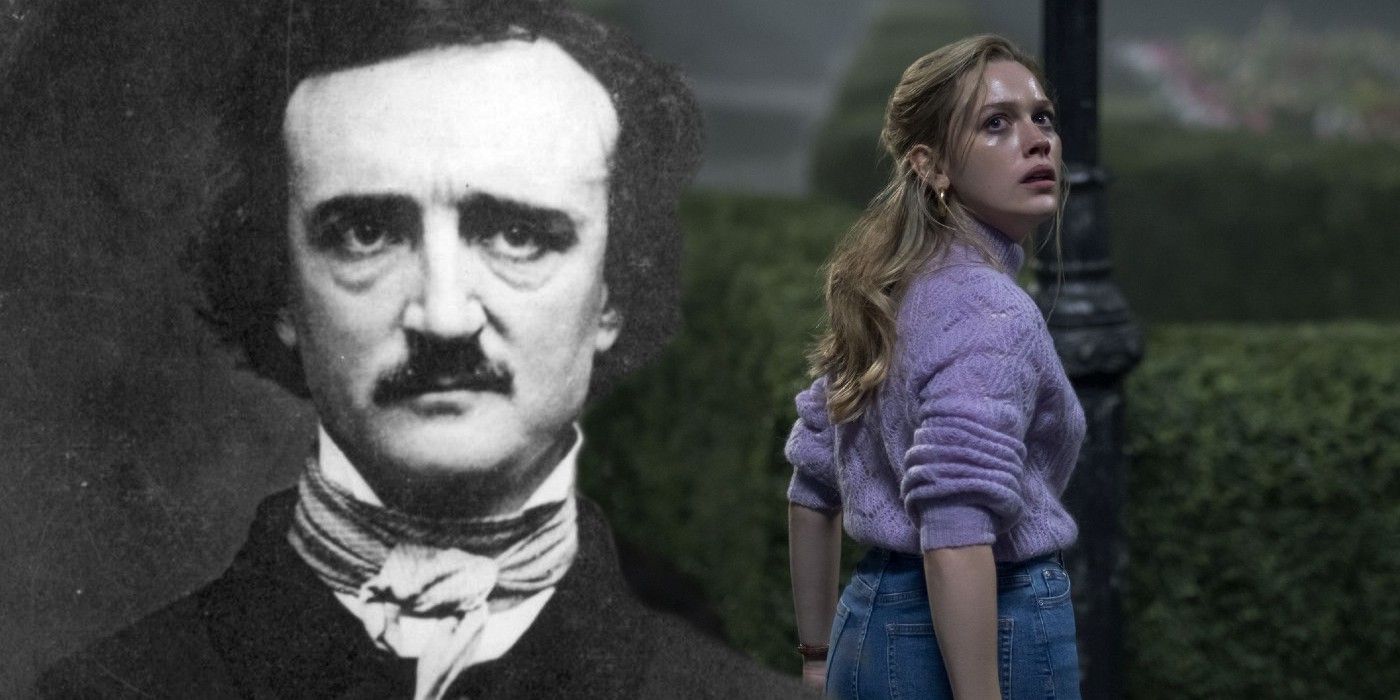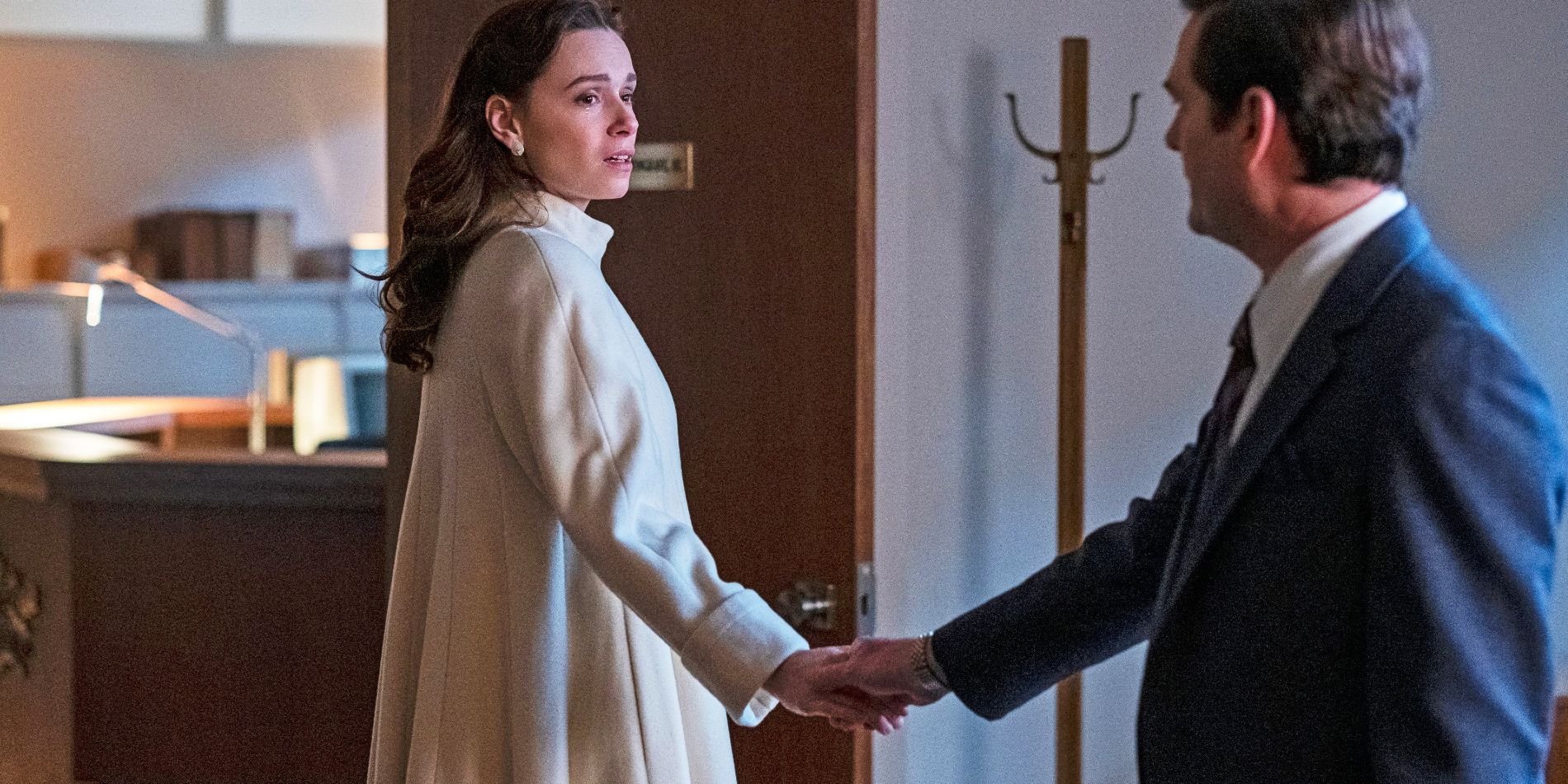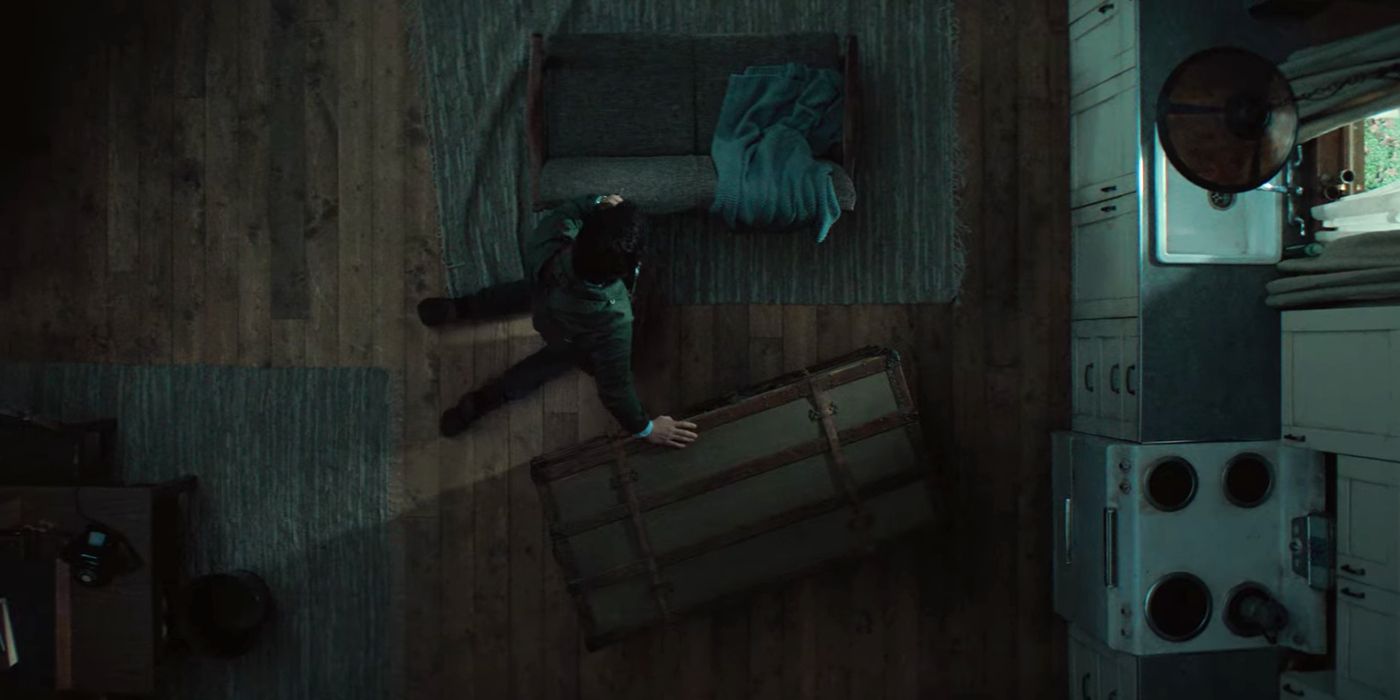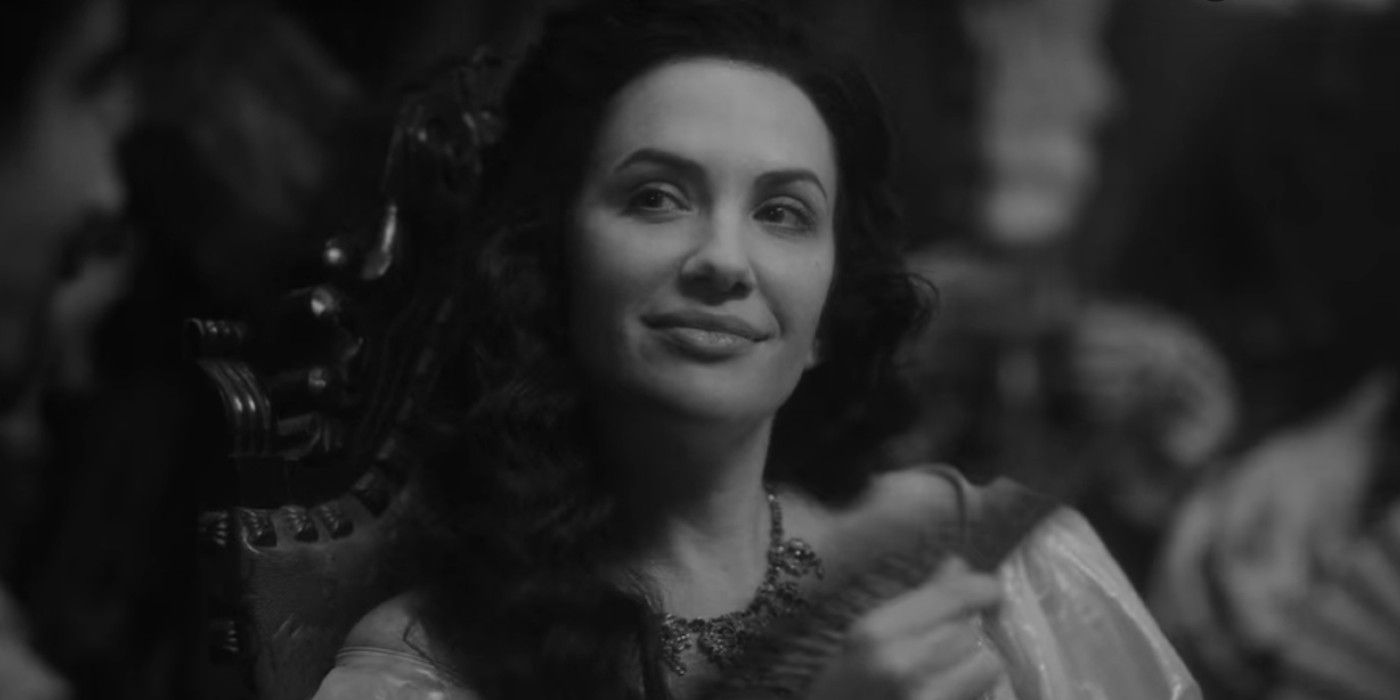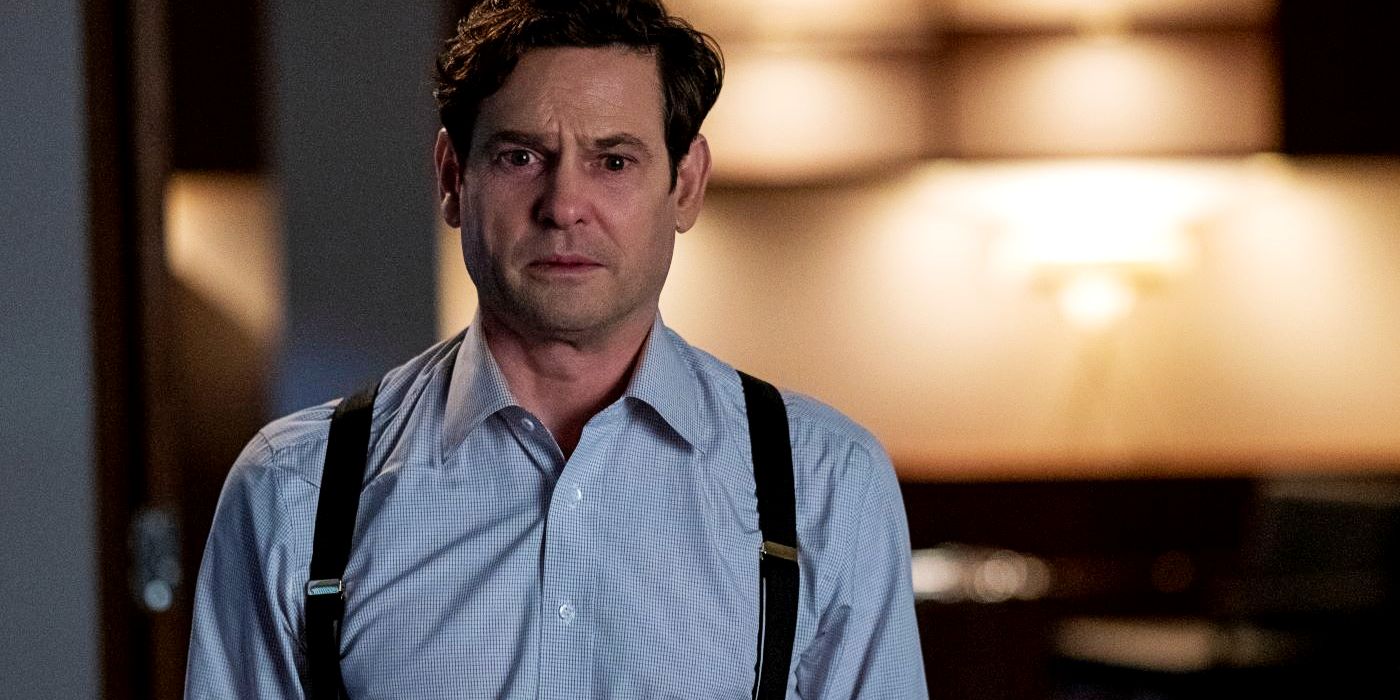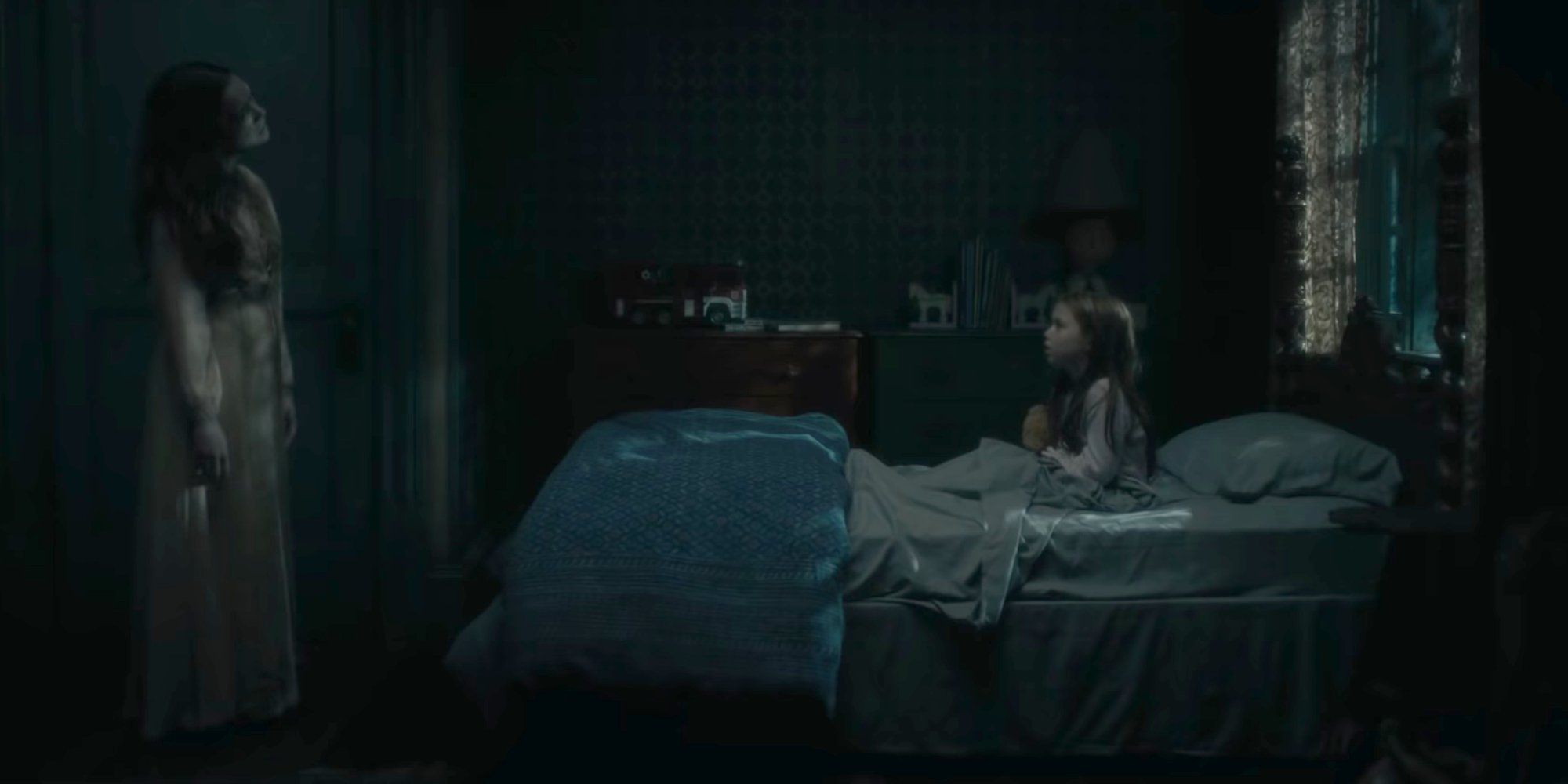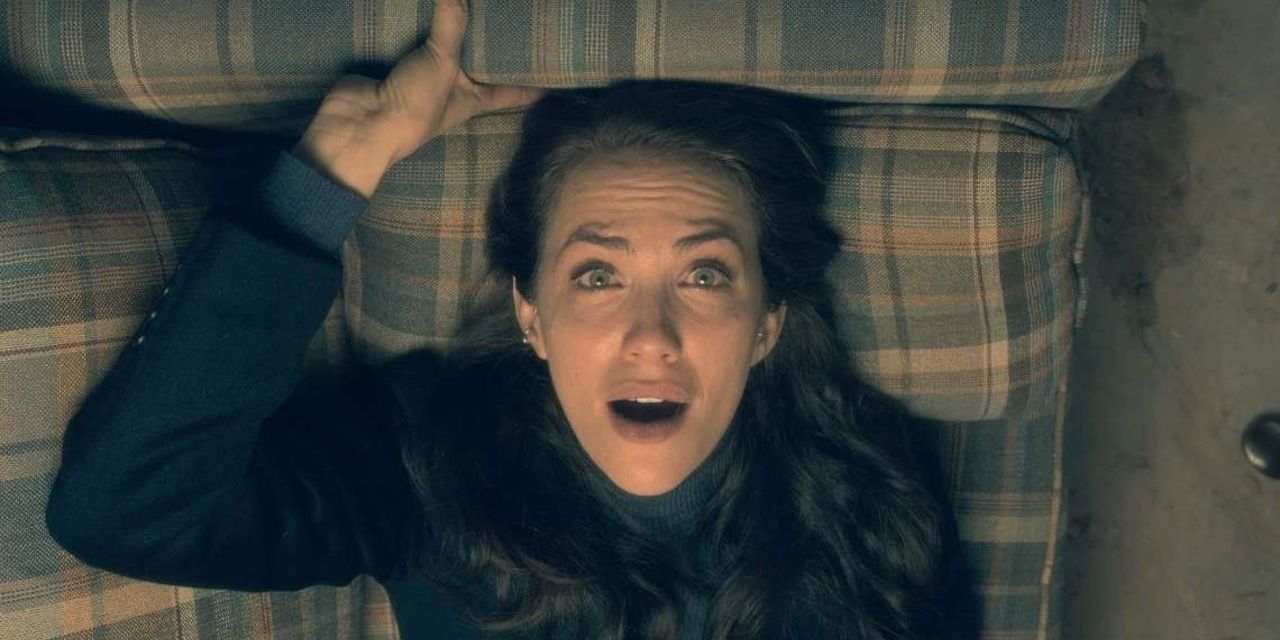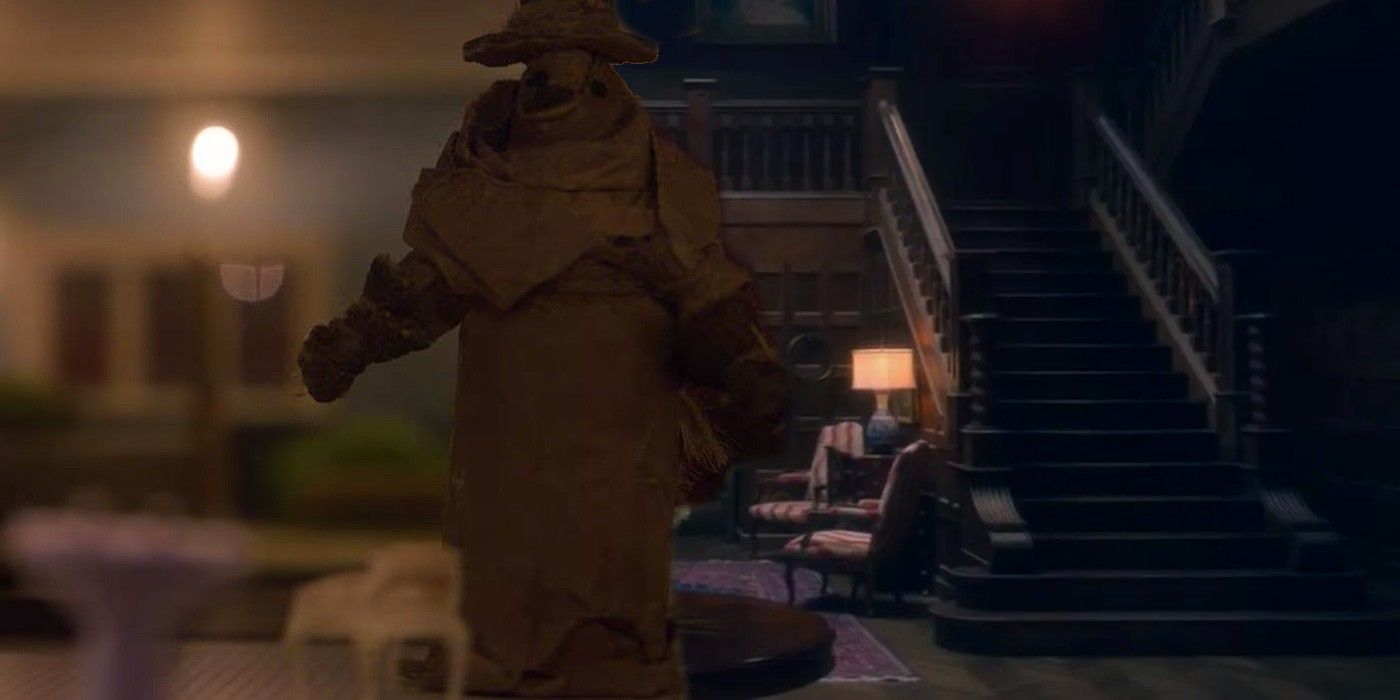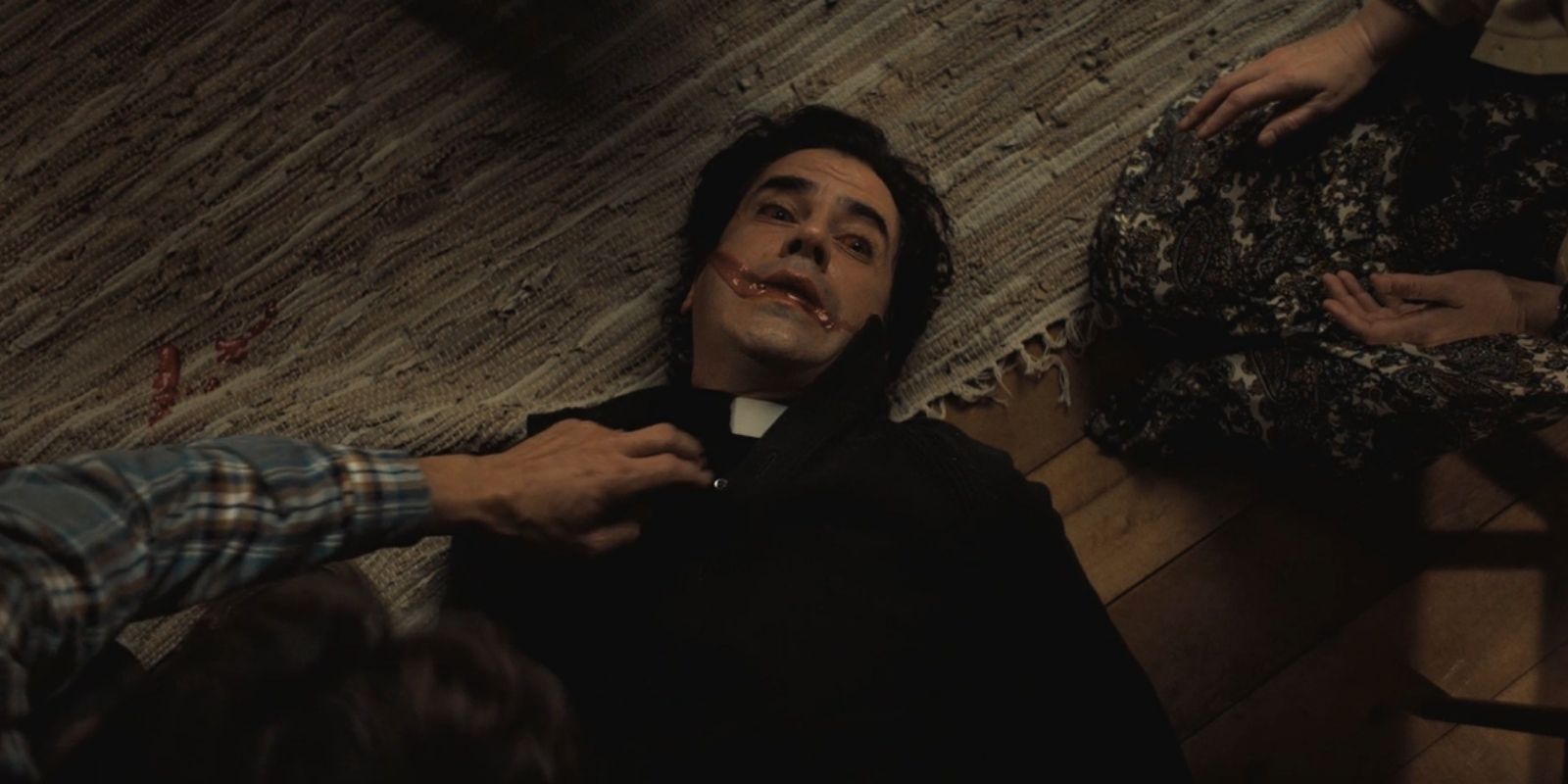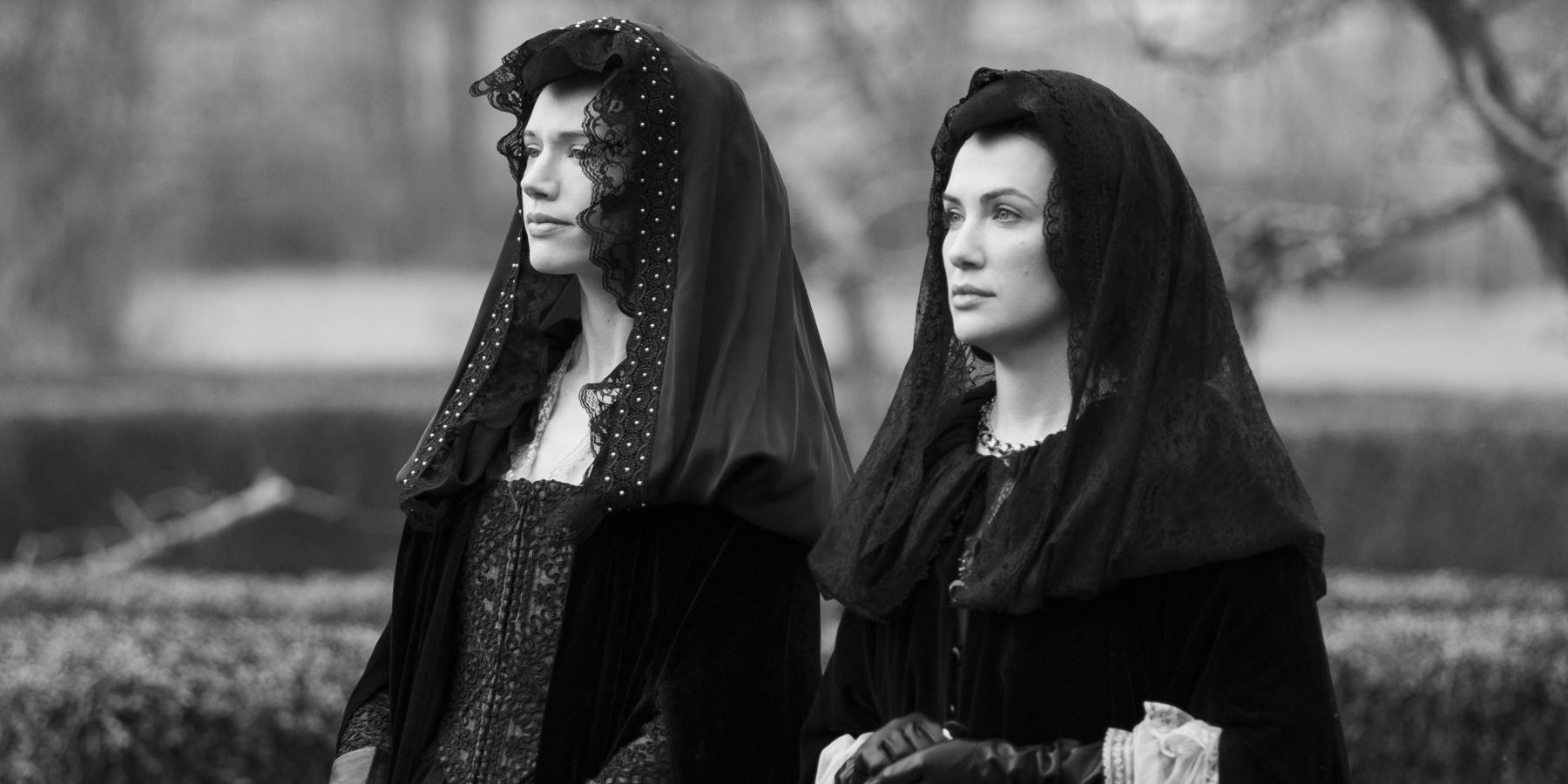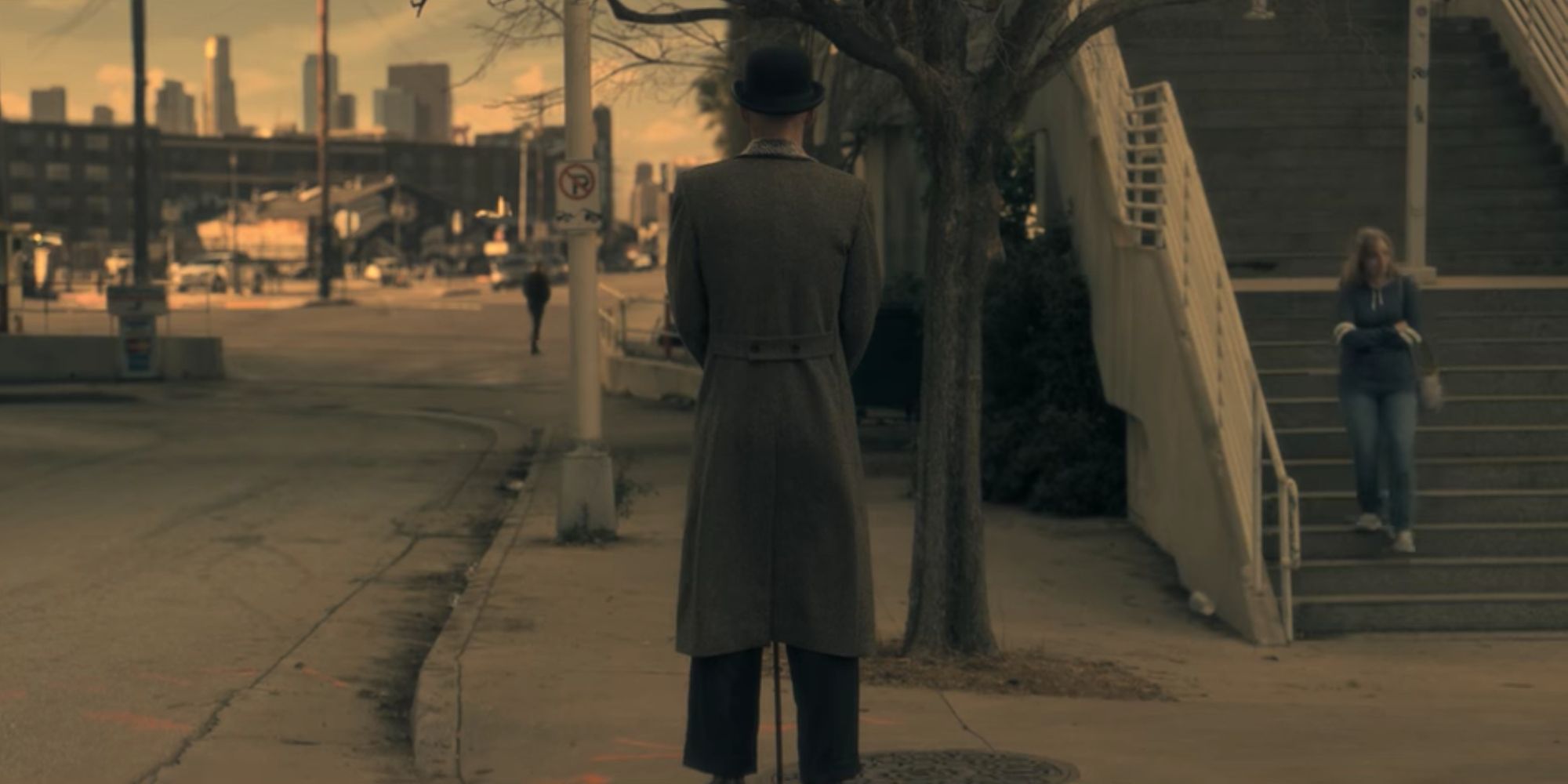Following the success of his three Netflix series to date, and with a fourth already on the way, Mike Flanagan has announced that he will be developing the stories of Edgar Allan Poe in The Fall of the House of Usher. The anthology series will be inspired by the works of the prolific writer, including but not limited to the titular tale.
Poe's works are some of the most beloved pieces of literary horror, spanning decades, genres, styles, and lengths. It would be impossible for Flanagan to include every work that Poe ever wrote in the anthology series, but based on Flanagan's past, there are some stories that seem more well-suited to this forthcoming series than others.
"The Oval Portrait"
"The Oval Portrait" is one of the shortest stories in the Poe canon, but it is brutally effective in its imagery. The story-within-a-story focuses on a young woman who has recently married an artist. Her new husband becomes so obsessed with her beauty that he forces her to sit for a portrait, which he then obsessively paints without disruption until the young woman dies without his even realizing it.
Despite the story's brevity, the mix of morbidity and social insight is one that carries on in his later works, including The Picture of Dorian Gray. Flanagan is known for his love of ill-fated romances, including those with darker elements, so this would make for a perfect story to be retold, and perhaps even expanded upon.
"The Oblong Box"
"The Oblong Box" contains some of the worst amateur detective work in fiction. The narrator of the story spends his entire voyage on the ship "Independence," puzzling over his friend's decision to travel with his wife and a large box, which he believes to contain an art piece. In reality, the box contains the body of his friend's recently deceased wife.
The Haunting of Hill House and Midnight Mass both contain key plots revolving around the unknown contents of a sealed-off space. Though the story's narrator is much more naive than most characters in Flanagan's works, there is still something inherently fascinating about his gullibility when contrasted with his friend's desperation, which would provide plenty of material for Flanagan to explore.
"Ligeia"
In "Ligeia," the narrator falls in love with a mysterious woman named Ligeia, whose beauty is almost ghostly and understanding of the world is itself otherworldly. After Ligeia dies, the narrator remarries a more conventional woman named Rowena. But soon enough, Rowena dies as well - only to be reborn, impossibly, as Ligeia.
"Ligeia" would allow Flanagan to explore some of the same ideas as depicted in the Bly Manor episode "The Romance of Certain Old Clothes," an episode about duality, romantic competition, jealousy, possession, and vengeance. "Ligeia," likewise, includes similar elements to Midnight Mass, as there is a suggestion of supernatural tampering with wine.
"The Raven"
Although "The Raven" is technically a poem and not a story, it nevertheless features one of Poe's most well-known tales. Throughout the tale, the narrator struggles with his profound grief over the loss of his love, Lenore, while feeling personally tormented by the mocking presence of a raven who can only speak the word "Nevermore."
Flanagan has had a particular interest in exploring characters grappling with grief and paranoia. In Bly Manor, Henry longs for his lost love, Charlotte, while also being tormented by his own insidious doppelganger. In Hill House, the Crains are forever changed by grief and trauma. The narrator of "The Raven" would, therefore, make a fine addition to Flanagan's canon of tormented heroes.
"The Premature Burial"
"The Premature Burial" follows yet another of Poe's neurotic narrators. In this story, the narrator goes to great lengths to explain the origins of his fear of being buried alive, stemming from his own health issues. He only seemingly overcomes his fear by having a traumatic episode, which is later revealed to be a commonplace occurrence and nothing to fear.
Many Flanagan characters experience paralysis, due to fear or other circumstances. Nell Crain, when confronted with the Bent-Neck Lady and even when she becomes the Bent-Neck Lady herself, is frozen still and screams with her mouth shut. Victims who die in the lake of Bly Manor are forced to experience being forcibly drowned. This recurring theme would make "The Premature Burial" a natural fit in the miniseries.
"The Murders In The Rue Morgue"
"The Murders in the Rue Morgue" is arguably one of Poe's most well-known stories and one that would be nearly impossible to forget. C. Auguste Dupin investigates the murder of a mother and daughter, both killed through different but grisly means. Through rigorous investigation, Dupin somehow comes to the conclusion that the murders were committed by an orangutan.
Many characters in Flanagan's Netflix series to date have had investigative qualities, from Theo Crain and her work as a child psychologist, to Erin Greene, Sarah Gunning, and Sheriff Hassan investigating the origins of the infection. While the orangutan plot twist might feel a bit out of place among Flanagan's past projects, it would still be impressive to see him take on this masterwork.
"The Masque Of The Red Death"
"The Masque of the Red Death" tells the story of elites who deliberately cut themselves off from the world to avoid the horrifying plague that is currently sweeping through their society. Even as they celebrate and cavort with one another, the noblemen and noblewomen learn soon enough that they cannot escape the "Red Death," and all soon succumb to it.
In Bly Manor, a plague doctor is one of the recurring hidden ghosts. In Midnight Mass, the vampire blood infection is regarded as a small-scale outbreak. Likewise, characters in Midnight Mass alternate between fearing and accepting the inevitability of death, which is a theme "The Masque of the Red Death" more than expands upon.
"The Pit And The Pendulum"
"The Pit and the Pendulum" follows its narrator through a dark period of trials after he is condemned to death by the Spanish Inquisition. The story details one harrowing sensory experience after another, from being enclosed in pitch blackness, to nearly being torn apart by a pendulum, to almost falling to his death into a pit.
Of all of Midnight Mass's characters, Father Paul is most prone to fits of life-altering terror and panic, as well as episodes of unconsciousness. He is fearful of death, of pain, and of suffering, and describes his experiences in very visceral, chilling language. Flanagan has experience writing such a uniquely tormented character, and would excel at doing so again with "Pit."
"The Cask Of Amontillado"
"The Cask of Amontillado" is a deeply disturbing tale, as it chronicles a murder that is committed for no clear reason, and from the point of view of the murder at that. Montresor, desperate for revenge on Fortunato, vows to kill his foe once and for all. He does just that by getting Fortunato intoxicated and bricking him within the walls of his wine cellar.
The motif of close individuals killing each other is one that is all too familiar to Flanagan's work, as sisters kill each other out of jealousy and vengeance in Bly Manor. Additionally, one of Hill House's scariest ghosts, William Hill, died by suicide when he walled himself within the basement walls, showing that Flanagan has a grasp on the central crime at the heart of "Amontillado."
"The Tell-Tale Heart"
Over the course of "The Tell-Tale Heart," the narrator describes their conflicted feelings toward an elderly man they live with, feelings which ultimately drive the narrator to kill the man. Following the murder, the narrator is gradually driven mad by their guilt, and their perception of the victim's heartbeat echoing beneath the floorboards.
Intentionally or not, Flanagan has been hinting at "The Tell-Tale Heart" from the moment Hugh Crain found William Hill's body sealed within the walls of Hill House. He also has many characters who have been dealt with mental illnesses. Characters like Olivia Crain, Nell Crain, Father Paul, and others are frequently described as "scattered" or "sensitive," all qualities that easily lend themselves to further interpretation of "Tell-Tale."

